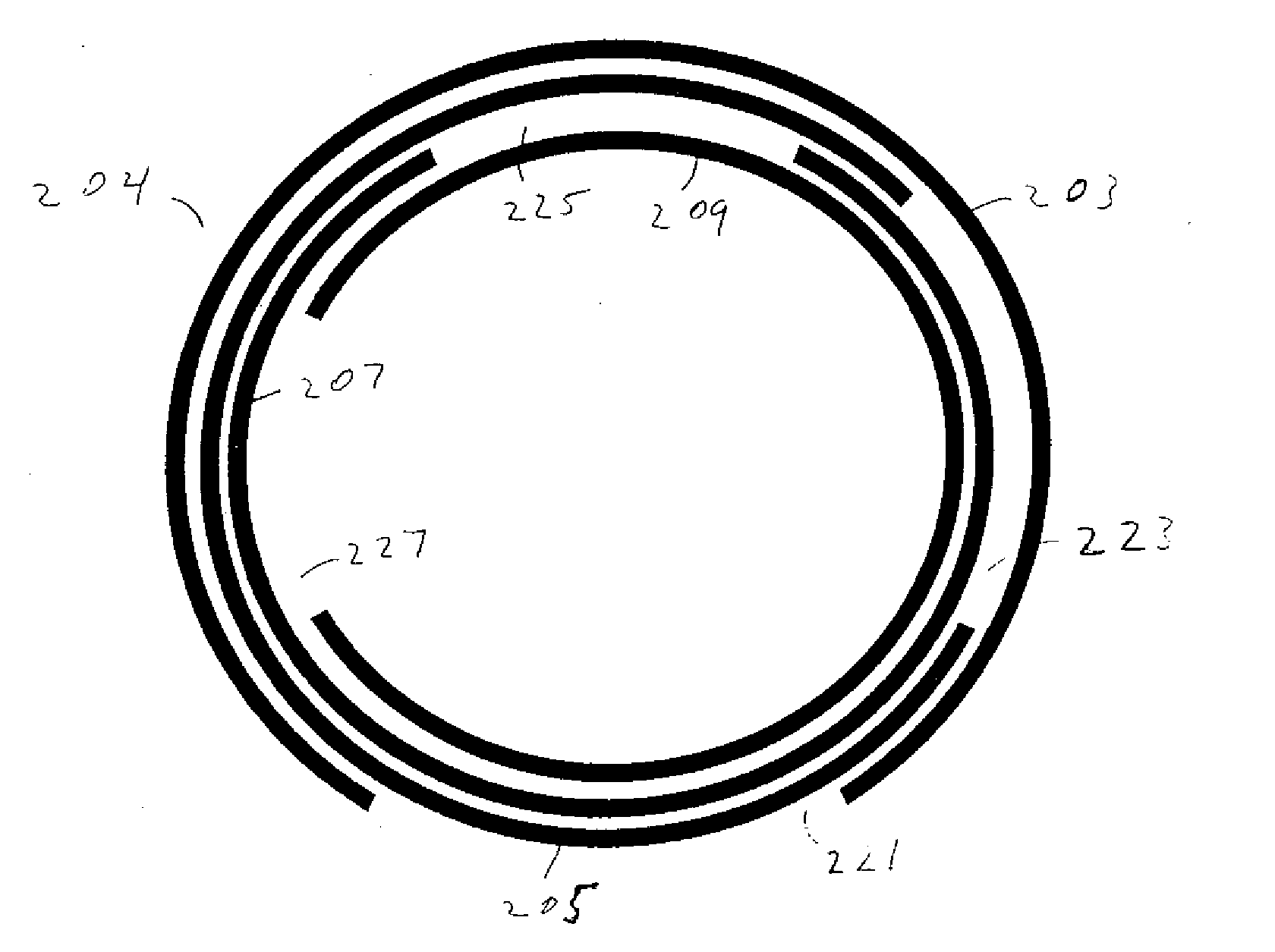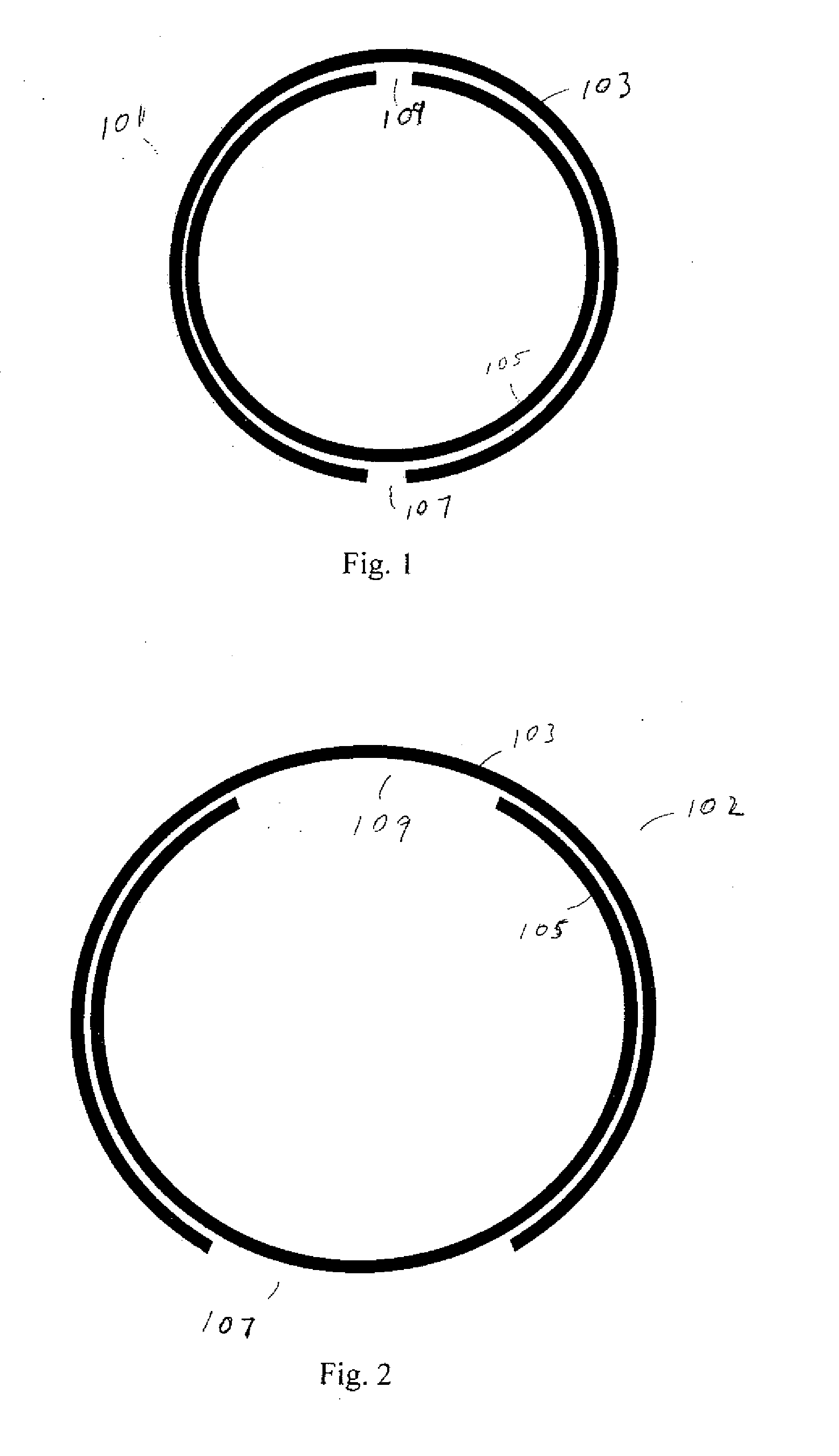Expandable tubulars for use in geologic structures
a technology of expandable pipes and geologic structures, which is applied in the direction of drilling pipes, drilling casings, borehole/well accessories, etc., can solve the problems of high cost, slow drilling and construction of oil and gas wells, and high cost of some wells
- Summary
- Abstract
- Description
- Claims
- Application Information
AI Technical Summary
Benefits of technology
Problems solved by technology
Method used
Image
Examples
Embodiment Construction
[0052]The present invention is directed towards tubular structures that are expandable in diameter. The inventive tubular structures may be compressed and placed into a borehole in the ground or any other structure. In the compressed state, the tubular is able to fit within the inner diameter of a deployed tubular and provide a suitable circulating annulus. Thus, the compressed tubular is placed into a borehole through other deployed tubulars. Once the tubular structure is properly positioned, which may or may not include attachments to adjacent deployed tubulars, it is expanded in diameter until its outer diameter is resisted by the rock borehole. The expanded casing may penetrate the walls of the borehole.
[0053]In an embodiment, the inventive expandable tubular may comprise a plurality of expandable springs that are sheets of strong elastic material that are formed into a generally cylindrical shape from at least one sheet of material and have at least two free ends that extend al...
PUM
 Login to View More
Login to View More Abstract
Description
Claims
Application Information
 Login to View More
Login to View More - R&D
- Intellectual Property
- Life Sciences
- Materials
- Tech Scout
- Unparalleled Data Quality
- Higher Quality Content
- 60% Fewer Hallucinations
Browse by: Latest US Patents, China's latest patents, Technical Efficacy Thesaurus, Application Domain, Technology Topic, Popular Technical Reports.
© 2025 PatSnap. All rights reserved.Legal|Privacy policy|Modern Slavery Act Transparency Statement|Sitemap|About US| Contact US: help@patsnap.com



